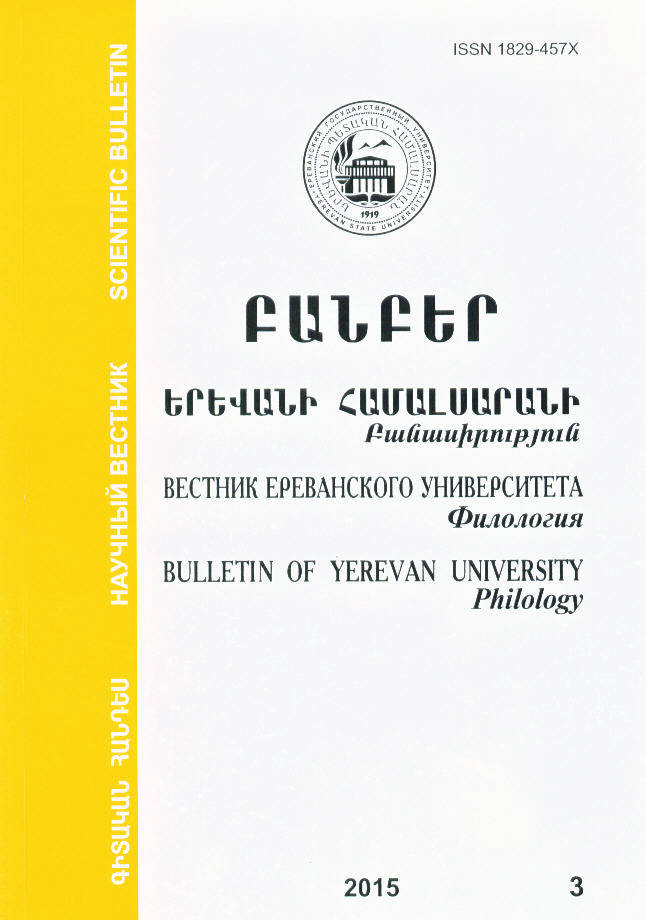Hermeneutics as Methodology of Interpreting Works of Verbal Creativity
DOI:
https://doi.org/10.46991/BYSU:B/2015.6.3.029Keywords:
verbal art, understanding, hermeneutical approach, methodological mechanism, the linguostylistic analysis, the linguopoetic analysisAbstract
The present theoretical research deals with the question of reading and understanding a work of verbal creativity – a question which has long declared itself to be one of the intricate problems of philology. The paper aims at emphasizing the methodological value of the hermeneutical approach to the study of literature which comes into being due to the presence of three basic components: imagination, language as a code between the writer and the reader, and the expected ability of the reader to share the author’s emotions and thoughts. Proceeding from the basic statements of hermeneutics and Schleiermacher’s theory of hermeneutical circle, in particular, as well as considering the results of our former investigations we come to the conclusion that understanding verbal art is a complex process which is achieved step by step. To provide a reliable mechanism for the application of the hermeneutical approach the investigator has to take the following steps: to reveal the correlation of language and speech with the help of the linguostylistic method of analysis, to understand the aesthetic value of the work built up due to the complex relationship of the linguistic elements used in the work and its poetics which is brought out by the linguopoetic method of analysis and thus come up to the metametasemiotic level of analysis which, in fact, belongs to the sphere of literary studies and helps to reveal the intention of the author and the idea of the work.
Downloads
Published
How to Cite
Issue
Section
License
Copyright (c) 2021 Bulletin of Yerevan University

This work is licensed under a Creative Commons Attribution-NonCommercial 4.0 International License.

